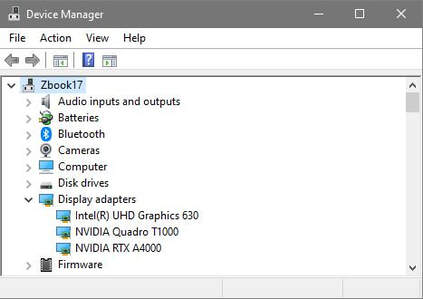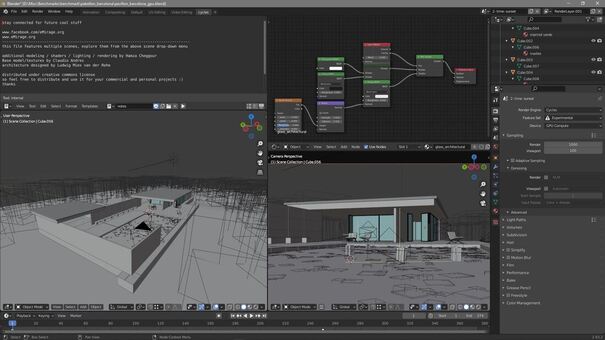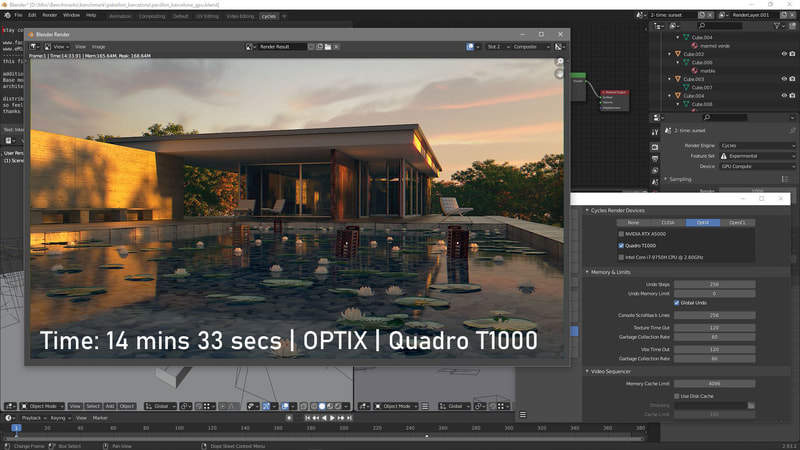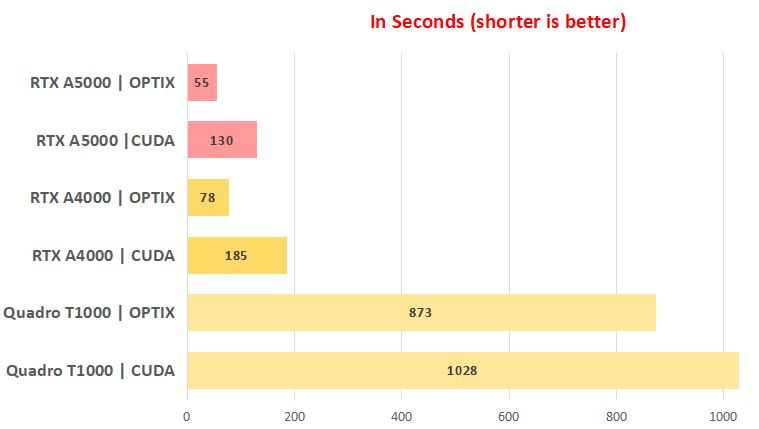|
Earlier, I posted about my HP Zbook 17 G6, configured with Nvidia RTX A5000 professional desktop GPU and it delivers remarkable computing performance for engineering and multimedia, shortening huge time needed for rendering, data processing, analysis and some other tasks that rely on GPU. It offers huge leap as well with new Nvidia Optix alongside CUDA. And now, I'm gonna give an early impression of the RTX A5000's little brother, the RTX A4000 professional desktop GPU. Nvidia RTX A4000, Single Slot Performance Breaker Frankly speaking, I love the physical form factor of this RTX A4000. It's minimal, yet carries bulk of punch in terms of performance. Before jumping to it, I'm gonna share a bit about the tech spec of this sleek GPU.
I found it interesting the tech spec of the RTX A4000 professional desktop GPU is similar to RTX A5000 professional mobile GPU. Yet, since I don't have the RTX A5000 mobile module for the Zbook 17 G6, I couldn't extend any words about how it will perform. Anyway let's jump to this RTX A4000 early real life performance report. The Benchmark Installation of this RTX A4000 into the Thunderbolt 3 enclosure is no different to the RTX A5000. Just plug and connect. However, I was smiling, knowing that when I connect the TB3 cable from the enclosure to the Zbook 17 G6, it immediately detected the RTX A4000 without a glitch. No wonder as both A5000 and A4000 come from identical architecture and share same identical driver. The case was different with my good old Tesla K10. Again, I'm gonna use the Blender's Paviliun Barcelone file to test it as it contains lots and lots of reflections as well as a good representation of what architectural visualization requires. I found some interesting things about the test, compared to the RTX A5000. I'll get to it later. But meanwhile, the result of this RTX A4000, is no less than incredible. Again, Nvidia OPTIX clearly shows as a major breakthrough. And Blender could simply take advantage out of it. The OPTIX really cuts down the rendering time from 3 mins, down to less than 1.3 mins. It gives such productivity to a new level, even with this single slot card. Next, I'm gonna summarize things I bench'ed with all A5000 and A4000 card earlier and gonna tell you the interesting thing I found. Let's begin with the chart first. The chart shows that RTX A5000 is clearly the champion over all 3 GPUs: Quadro T1000, RTX A4000 and RTX A5000. Its OPTIX performance simply cut down the rendering significantly over the Quadro T1000 by far. And this is where it gets even more interesting when comparing A4000 and A5000. As you see, A4000 carries 6,144 cores while A5000 carries heftier 8,192 cores. When we see the # of core ratio between the A4000 and A5000, the RTX A4000 is just having averagely 0.7 # of core compared to A5000. I didn't see any relation between this, until I calculated the rendering time completion between the A5000 and A4000. RTX A5000 managed to finish the Paviliun Barcelone render task under OPTIX in 55 secs only, while the A4000 did it in 78 secs. The rendering time ratio between the two, is averagely hitting 0.7. The amount of cores ratio in each A4000 and A5000 are 6,144 and 8,192 cores, respectively at 0.7 too. So, the number of cores inside the two GPUs carry direct linear relation to the performance. My guess is, that the RTX A6000 would render this Paviliun Barcelone file in Blender, along with the Zbook 17 G6, in just slightly under 40 secs. Too bad I couldn't confirm the RTX A6000 with this. I hope some people who get their hands on the RTX A6000 could confirm this. Preliminary Conclusion With both A4000 and A5000 having their early tests, they clearly show both cards dominate the productivity seekers like me, in order to cut down time required to finish heavy tasks in engineering and multimedia fields. They surely perform much higher than I personally expected. I'm so amazed on how OPTIX performed, compare to just normal CUDA. The last 3 days I'm working to finish some lecture materials, the RTX A5000 and A4000 were being used as swapped card one to another. The loads were quite heavy, forcing it to have 100% load while rendering and do some visual calcs. But clearly no bitcoin mining at all. What pleased me was, both never ever encountered a single crashed. Just smooth rides until it finished every single tasks given. And this is the benefit of using ECC GDDR6 inside the RTX A4000 and A5000, compared to normal gaming GPUs without ECC graphics memory. With many more tests and research waiting ahead, I could help my self to immediately begin by end of this week. With so much brute force and computing power alongside this HP Zbook 17 G6, I'm afraid I couldn't conquer 2 natural self limitation I've been encountering here: time and rest. Those are things that couldn't be optimized even more from my personal side. However, better time and rest management will lead us to much happier life, isn't it? Stay tuned for more HP Zbook 17 G6 computing journey!
0 Comments
Your comment will be posted after it is approved.
Leave a Reply. |
AuthorBimo Adi Prakoso, founder of Sentra Grafika Kompumedia, is an engineering-animation-broadcast industry professional and workstation evangelist. He's been in the Workstation industry since 1996, the era of SGI. Archives
June 2024
Categories |
Copyright © 2024 Sentra Grafika Kompumedia. All rights reserved.
Jual HP Workstation dan HP Mobile Workstation Terlengkap Di Indonesia
Jual HP Workstation dan HP Mobile Workstation Terlengkap Di Indonesia









